 W
WSamuel Alcock (1799–1848) was a leading pottery manufacturer who operated as Samuel Alcock & Co in Burslem, Staffordshire from 1828 to 1859. They were especially noted for "picture jugs" modelled and moulded in relief in various ceramic materials, a popular type of object in these years.
 W
WJohn Astbury (1688–1743) was an English potter credited with innovations and improvements in earthenware associated with Staffordshire figures.
 W
WAynsley China Ltd. was a British manufacturer of bone china tableware, giftware and commemorative items.
 W
WA bottle kiln, or bottle oven, is a type of kiln. The word 'bottle' refers to the shape of the structure and not to the kiln's products, which are usually pottery, not glass.
 W
WMessrs. Thomas C. Brown-Westhead, Moore & Co. was a manufacturer of China, earthenware, including high quality innovative Victorian majolica and sanitary goods at Cauldon Place, Stoke-upon-Trent in England from 1856.
 W
WBurleigh Pottery is the name of a pottery manufacturer in Middleport, Stoke-on-Trent. The business specialises in traditionally shaped and patterned domestic earthenware of high quality.
 W
WColin Minton Campbell, of Woodseat in Staffordshire, was a British businessman and Member of Parliament. On his death of his uncle Herbert Minton in 1858, Colin Minton Campbell took over leadership of the family company Mintons, a leading firm making Staffordshire pottery of many kinds in Stoke-on-Trent.
 W
WCarlton Ware was a pottery manufacturer based in Stoke-on-Trent. The company is known for its often rather garish tableware, often in the form of highly decorated leaves or fruit, and the ceramic toucans it made as promotional items for Guinness. It produced hand-painted domestic pottery in high art deco styles during the 1920s and 1930s.
 W
WChintzware, or chintz pottery, describes chinaware and pottery covered with a dense, all-over pattern of flowers or, less often, other objects. It is a form of transferware where the pattern is applied by transfer printing as opposed to the more traditional method of painting by hand.
 W
WChurchill China PLC is a British pottery manufacturer based in Stoke-on-Trent in the United Kingdom.
 W
WWilliam Taylor Copeland, MP, Alderman was a British businessman and politician who served as Lord Mayor of London and a Member of Parliament.
 W
WCreamware is a cream-coloured refined earthenware with a lead glaze over a pale body, known in France as faïence fine, in the Netherlands as Engels porselein, and in Italy as terraglia inglese. It was created about 1750 by the potters of Staffordshire, England, who refined the materials and techniques of salt-glazed earthenware towards a finer, thinner, whiter body with a brilliant glassy lead glaze, which proved so ideal for domestic ware that it supplanted white salt-glaze wares by about 1780. It was popular until the 1840s.
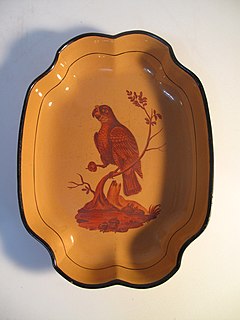 W
WDavenport Pottery was an English earthenware and porcelain manufacturer based in Longport, Staffordshire. It was in business, owned and run by the Davenport family, between 1794 and 1887, making mostly tablewares in the main types of Staffordshire pottery.
 W
WDudson is a British company that manufactured tableware, glassware and porcelain. It is one of the oldest brands of its industry in England, founded in 1800. It was also one of the first pottery companies to identify a need to serve specifically the hospitality market, and began to serve exclusively this segment soon after its launch. In 1891 it even developed a stronger type of vitrified china for the hospitality market and it's believed to be one of the first globally to do so.
 W
WJohn Philip Elers and his brother David Elers were Dutch silversmiths who came to England in the 1680s and turned into potters. The Elers brothers were important innovators in English pottery, bringing redware or unglazed stoneware to Staffordshire pottery. Arguably they were the first producers of "fine pottery" in North Staffordshire, and although their own operations were not financially successful, they seem to have had a considerable influence on the following generation, who led the explosive growth of the industry in the 18th century.
 W
WEmma Bridgewater is a British ceramics manufacturing company founded in 1985 which is named after Emma Rice. It is run by her and her husband Matthew Rice. Noted for their polka dot design among others, the company "Emma Bridgewater" specialises in pottery with motifs drawing on techniques stretching back over 200 years. The company is one of the largest pottery manufacturers based entirely in the UK. Most of its products are made in its factory in the city of Stoke-on-Trent, England, while others are produced in Poland.
 W
WThe Etruria Works was a ceramics factory opened by Josiah Wedgwood in 1769 in a district of Stoke-on-Trent, Staffordshire, England, which he named Etruria. The factory ran for 180 years.
 W
WFlow blue is a style of white earthenware, sometimes porcelain, that originated in the Regency era, sometime in the 1820s, among the Staffordshire potters of England. The name is derived from the blue glaze that blurred or "flowed" during the firing process.
 W
WGibbs and Canning Limited was an English manufacturer of terracotta and, in particular, architectural terracotta, located in Glascote, Tamworth, and founded in 1847.
 W
WThe Gladstone Pottery Museum is a working museum of a medium-sized coal-fired pottery, typical of those once common in the North Staffordshire area of England from the time of the industrial revolution in the 18th century to the mid 20th century. It is a grade II* listed building.
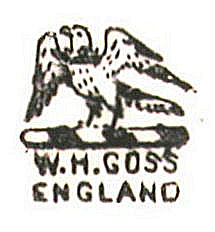 W
WGoss crested china is typically in the form of small white glazed porcelain models, made from 1858 to 1939, carrying the coat of arms of the place where they were sold as a souvenir, thus being a form of model heraldic china.
 W
WWilliam Henry Goss was an English potter notable for having developed the souvenir trade in pottery with his Goss crested china.
 W
WWilliam Greatbatch was a noted potter at Fenton, Staffordshire, from the mid-eighteenth to the beginning of the nineteenth centuries. Fenton was one of the six towns of the Staffordshire Potteries, which were joined in the early 20th century to become the city of Stoke-on-Trent in Staffordshire, England.
 W
WJames Ewen Henderson was an English ceramic artist.
 W
WHomemaker was a pattern of mass-produced earthenware tableware that was very popular in the United Kingdom in the 1950s and 60s. The pattern was designed by Enid Seeney, manufactured by Ridgway Potteries of Stoke-on-Trent between 1957 and 1970, and sold exclusively through Woolworth's stores.
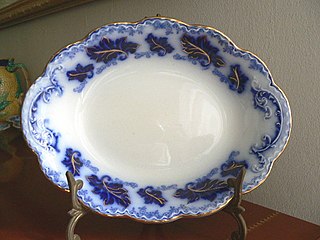 W
WJohnson Brothers was a British tableware manufacturer and exporter that was noted for its early introduction of "semi-porcelain" tableware. It was among the most successful Staffordshire potteries which produced tableware, much of it exported to the United States, from the 1890s through the 1960s. They were also important manufacturers of large bathroom ceramics. Some of its designs, such as "Eternal Beau", "Dawn", "Old Britain Castles" and "Historic America", achieved widespread popularity and are still collected today. The company's success was due in part to its ability to identify and follow trends that appealed to its customers in the United States, and in part to the high quality of its designs, produced by skilled artists.
 W
WJ. & G. Meakin was an English pottery manufacturing company founded in 1851 and based in Hanley, Stoke-on-Trent, Staffordshire.
 W
WThe Midwinter Pottery was founded as W.R. Midwinter by William Robinson Midwinter in Burslem, Stoke-on-Trent in 1910 and had become one of England's largest potteries by the late 1930s with more than 700 employees. Production of Midwinter pottery ceased in 1987.
 W
WThomas Minton was an English potter. He founded Thomas Minton & Sons in Stoke-on-Trent, Staffordshire, which grew into a major ceramic manufacturing company with an international reputation.
 W
WMintons was a major company in Staffordshire pottery, "Europe's leading ceramic factory during the Victorian era", an independent business from 1793 to 1968. It was a leader in ceramic design, working in a number of different ceramic bodies, decorative techniques, and "a glorious pot-pourri of styles - Rococo shapes with Oriental motifs, Classical shapes with Medieval designs and Art Nouveau borders were among the many wonderful concoctions". As well as pottery vessels and sculptures, the firm was a leading manufacturer of tiles and other architectural ceramics, producing work for both the Houses of Parliament and United States Capitol.
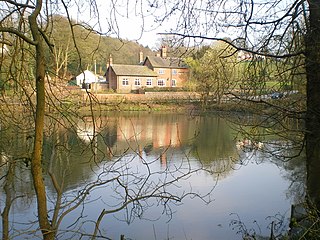 W
WModdershall is a small village in the borough of Stafford in the county of Staffordshire, England, part of the civil parish of Stone Rural and ecclesiastical parish of Oulton with Moddershall. Lying to the East of the River Trent, it is roughly halfway between the city of Stoke-on-Trent and the small town of Stone.
 W
WThe Paragon China Company was a British manufacturer of bone china from 1919 to 1960, based in Longton, Stoke-on-Trent, previously known as the Star China Company, and more recently part of the Royal Doulton group. Paragon was noted for producing high quality teaware and tableware, and was granted royal warrants of appointment by several members of the British Royal Family.
 W
WThe pew group is a rare type of pottery Staffordshire figure, apparently made only in the 1740s. Typically it has two or three "rigidly posed" figures sitting on a high-backed bench, often with a woman in the centre; great attention is paid to details of hair and clothing. The setting is not church, as the usual name suggests, but a comfortable home or inn, where high-backed settles were a common piece of furniture. Details are picked out in dark brown or black glaze, and dogs and musical instruments may be depicted, or the gentlemen may be taking snuff.
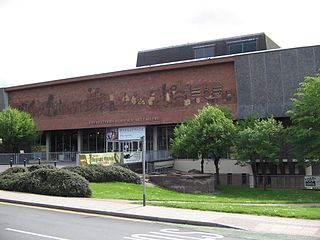 W
WThe Potteries Museum & Art Gallery is in Bethesda Street, Hanley, one of the six towns of Stoke-on-Trent in Staffordshire. Admission is free.
 W
WThe Ridgway family was one of the important dynasties manufacturing Staffordshire pottery, with a large number of family members and business names, over a period from the 1790s to the late 20th century. In their heyday in the mid-19th century there were several different potteries run by different branches of the family. Most of their wares were earthenware, but often of very high quality, but stoneware and bone china were also made. Many earlier pieces were unmarked and identifying them is difficult or impossible. Typically for Staffordshire, the various businesses, initially set up as partnerships, changed their official names rather frequently, and often used different trading names, so there are a variety of names that can be found.
 W
WRoyal Doulton is an English ceramic and home accessories manufacturer founded in 1815. Operating originally in Vauxhall, London, later moving to Lambeth, in 1882 it opened a factory in Burslem, Stoke-on-Trent, in the centre of English pottery. From the start the backbone of the business was a wide range of utilitarian wares, mostly stonewares, including storage jars, tankards and the like, and later extending to pipes for drains, lavatories and other bathroom ceramics. From 1853 to 1902 its wares were marked Doulton & Co., then from 1902, when a royal warrant was given, Royal Doulton.
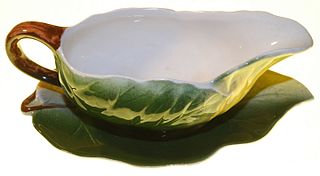 W
WRoyal Winton is an English brand of earthenware and fine bone china tableware, made by Grimwades Limited, a Stoke-on-Trent based company founded by Leonard Lumsden Grimwade and his elder brother, Sidney Richard Grimwade, in 1885. Pieces are marked with either name, or both. Among many other themes, the company made pieces with New Zealand interest, partly directed at the market there.
 W
WJames Sadler and Sons Ltd was a pottery manufacturer founded in 1882 by James Sadler in Burslem, Stoke-on-Trent, United Kingdom.
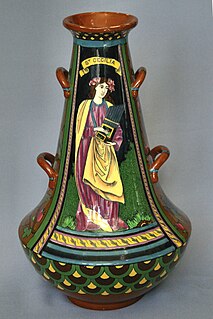 W
WShelley Potteries, situated in Staffordshire, was earlier known as Wileman & Co. which had also traded as The Foley Potteries. The first Shelley to join the company was Joseph Ball Shelley in 1862 and in 1896 his son Percy Shelley became the sole proprietor, after which it remained a Shelley family business until 1966 when it was taken over by Allied English Potteries. Its china and earthenware products were many and varied although the major output was table ware. In the late Victorian period the Art Nouveau style pottery and Intarsio ranges designed by art director Frederick Alfred Rhead were extremely popular but Shelley is probably best known for its fine bone china “Art Deco” ware of the inter-war years and post-war fashionable tea ware.
 W
WSpode is an English brand of pottery and homewares produced by the company of the same name, which is based in Stoke-on-Trent, England. Spode was founded by Josiah Spode (1733–1797) in 1770, and was responsible for perfecting two extremely important techniques that were crucial to the worldwide success of the English pottery industry in the century to follow.
 W
WJosiah Spode was an English potter and the founder of the English Spode pottery works which became famous for the high quality of its wares. He is often credited with the establishment of blue underglaze transfer printing in Staffordshire in 1781–84, and with the definition and introduction in c. 1789–91 of the improved formula for bone china which thereafter remained the standard for all English wares of this kind.
 W
WStaffordshire dog figurines are matching pairs of pottery spaniel dogs, standing guard, which were habitually placed on mantelpieces in 19th-century homes. Mainly manufactured in Staffordshire pottery, these earthenware figures were also made in other English counties and in Scotland. They are also known as hearth spaniels or fireplace dogs as they were positioned on top of the mantelpiece. Many other breeds were produced, particularly the greyhound, though the spaniels were especially popular and this is attributed to royalty favouring the King Charles Spaniel breed. In Scotland, they were colloquially termed Wally dugs and were manufactured in bulk at potteries in places such as Pollokshaws in Glasgow and Portobello near Edinburgh.
 W
WStaffordshire figures are a type of popular pottery figurine made in England from the 18th century onward. Most Staffordshire figures made from 1740 to 1900 were produced by small potteries and makers' marks are generally absent. Most Victorian figures were designed to stand on a shelf or mantlepiece and are therefore only modelled and decorated where visible from the front and sides. These are known as 'flatbacks'.
 W
WThe Staffordshire Potteries is the industrial area encompassing the six towns Burslem, Fenton, Hanley, Longton, Stoke and Tunstall, that now make up the city of Stoke-on-Trent in Staffordshire, England. North Staffordshire became a centre of ceramic production in the early 17th century, due to the local availability of clay, salt, lead and coal.
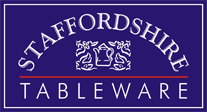 W
WStaffordshire Tableware Ltd. was a producer of mugs, tableware and dinnerware based in Stoke-on-Trent, England.
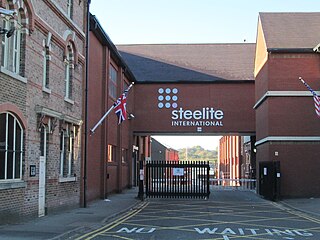 W
WSteelite International is a British ceramics and tableware manufacturer for the hospitality industry. It is based in Middleport, a district of Burslem in Staffordshire, England, with offices in New Castle, Pennsylvania and showrooms worldwide.
 W
WThomas Forester & Sons was a pottery manufacturer based in Longton, Staffordshire, United Kingdom. The company started as Thomas Forester in the 1870s and appeared in the Pottery Gazette regularly during the 1880s. They specialised in the manufacturing of Victorian majolica and earthenware.
 W
WThomas Toft was an English potter working in the Staffordshire Potteries during the 17th century. He and his family are known for large earthenware plates heavily decorated by slip-trailing, often in several colours. Work in this style, even by other makers, is known as Toft ware.
 W
WThe Turner family of potters was active in Staffordshire, England 1756-1829. Their manufactures have been compared favourably with, and sometimes confused with, those of Josiah Wedgwood and Sons. Josiah Wedgwood was both a friend and a commercial rival of John Turner the elder, the first notable potter in the family.
 W
WW H Grindley was an English pottery company that made earthenware and ironstone tableware, including flow blue. The company was founded in 1880 by William Harry Grindley, JP of Tunstall, Stoke-on-Trent.
 W
WWade Ceramics Ltd is a manufacturer of porcelain and earthenware, headquartered in Stoke-on-Trent, England. Its products include animal figures for its Collectors Club, whisky flagons, and a variety of industrial ceramics.
 W
WWedgwood is a fine china, porcelain, and luxury accessories manufacturer that was founded on 1 May 1759 by the English potter and entrepreneur Josiah Wedgwood and was first incorporated in 1895 as Josiah Wedgwood and Sons Ltd. It was rapidly successful and was soon one of the largest manufacturers of Staffordshire pottery, "a firm that has done more to spread the knowledge and enhance the reputation of British ceramic art than any other manufacturer", exporting across Europe as far as Russia, and to the Americas. It was especially successful at producing fine earthenware and stonewares that were accepted as equivalent in quality to porcelain but were considerably cheaper.
 W
WWedgwood is a fine china, porcelain, and luxury accessories manufacturer that was founded on 1 May 1759 by the English potter and entrepreneur Josiah Wedgwood and was first incorporated in 1895 as Josiah Wedgwood and Sons Ltd. It was rapidly successful and was soon one of the largest manufacturers of Staffordshire pottery, "a firm that has done more to spread the knowledge and enhance the reputation of British ceramic art than any other manufacturer", exporting across Europe as far as Russia, and to the Americas. It was especially successful at producing fine earthenware and stonewares that were accepted as equivalent in quality to porcelain but were considerably cheaper.
 W
WJosiah Wedgwood was an English potter, entrepreneur, and abolitionist. Founding the Wedgwood company in 1759, he developed improved pottery bodies by systematic experimentation, and was the leader in the industrialisation of the manufacture of European pottery.
 W
WThomas Whieldon was a significant English potter who played a leading role in the development of Staffordshire pottery.
 W
WA.J. Wilkinson was a pottery or potbank at Newport in Burslem, owned by the Shorter family since 1894. A sprawling complex of bottle ovens, kilns and production shops, it lay beside the Trent and Mersey Canal, the artery which provided it with coal and the raw materials for earthenware. In its heyday it employed 400 manual workers.
 W
WThe Wood family was an English family of Staffordshire potters. Among its members were Ralph Wood I (1715–1772), the "miller of Burslem," his son Ralph Wood II (1748–1795), and his grandson Ralph Wood III (1774–1801). Ralph I was the brother of Aaron Wood, father of Enoch Wood. Through his mother, Ralph Wood II was related to Josiah Wedgwood.
 W
WEnoch Wood (1759–1840) was an English potter and businessman, from one of the major families in Staffordshire pottery. Starting as a modeller, he established a successful business in Burslem in the Staffordshire Potteries, from 1790-1818 trading as Wood and Caldwell. In the 18th century they produced many Staffordshire figures, which Wood modelled himself, and other types of earthenware and stoneware. After 1818 his company, now Enoch Wood & Sons, produced large quantities of blue and white transfer-printed tableware in earthenware, much of which was exported to America.